Out at Sea with a Drone, Gina Lonati ’12 Monitors the Health of an Elusive Whale
By Rebecca Goldfine
Throughout the month of September, each day when the weather allows it, Lonati heads out into the Bay of Fundy on a chartered fishing boat. She brings along a drone outfitted with two cameras: one captures thermal images and the other shoots high-resolution footage.
Then the ship's crew—which consists of a number of researchers—waits for a whale. Once one is spied, usually by its telltale blow, Lonati flies her remote-controlled drone into position over the surfacing animal.
The high-resolution images will allow her to measure the ratio of body length to width, to see how lean or robust they are.
Meanwhile, when a whale briefly opens its blowhole to take a breath of air, the thermal imaging camera can get a reading of its core body temperature. This technique, though conducted at a distance, is akin to a human putting a thermometer under their tongue to see whether they have a fever, Lonati said.
Thermal imaging, however, does not provide as accurate a temperature as Lonati wants. To get a more specific number, she also has temperature probes measuring the water surface and air around the whale to compare with the whale's internal temperature.
Both of these measures—the high-resolution footage and the thermal images—will help Lonati and other scientists learn more about the health of whales. "What is unique about our project is we are combining two ways to look at the body condition of whales," Lonati said.
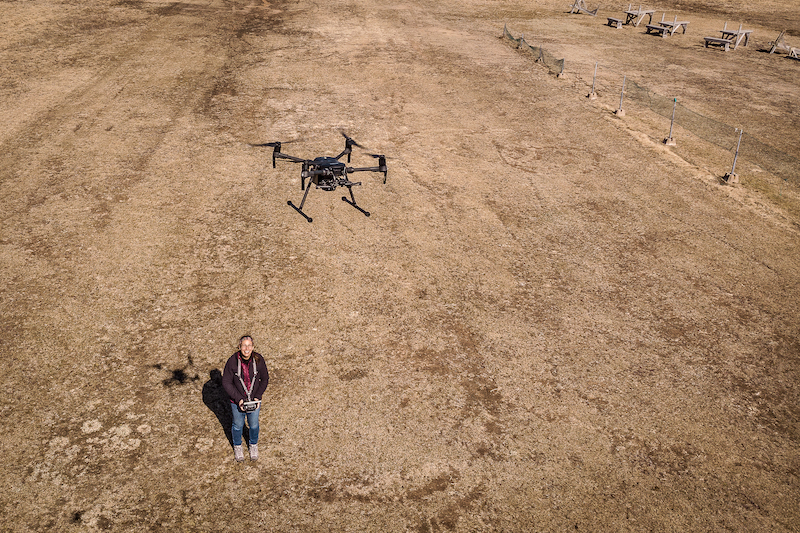
When she returns to her lab at the University of New Brunswick (UNB), Lonati will use this data to see how whales' physical condition could be affected by human impacts or food availability, and how it could be affecting their survival and reproductive rates.
For instance, a whale injured from fishing line entanglement or a ship collision—the main causes of mortality for right whales—could have a different core temperature because it is struggling to eat and can't build up enough blubber to insulate itself. Thinner females may not be strong enough to successfully give birth.
Because right whales are critically endangered—there are only four hundred remaining—and their foraging habits are changing, Lonati has not yet sighted one in the Bay of Fundy. Though this is disappointing, she plans to return to the field next summer to collect data as well, this time traveling farther north to the Gulf of St. Lawrence. (There are also two more weeks left in her project.)
While she waits for a right whale, she is practicing using her drone on more commonly seen minke and humpback whales.
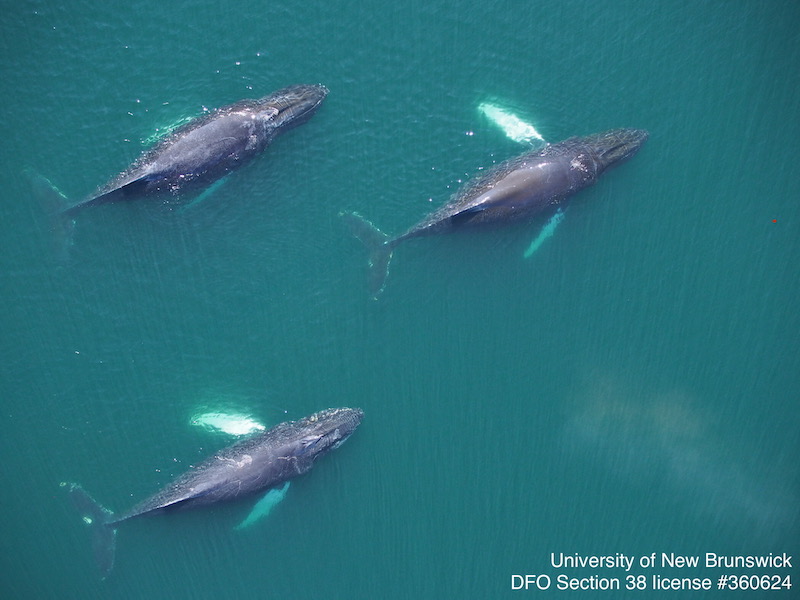
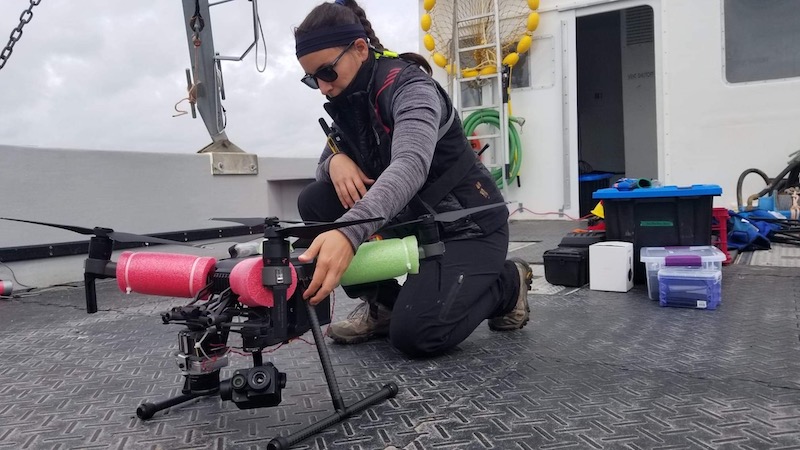
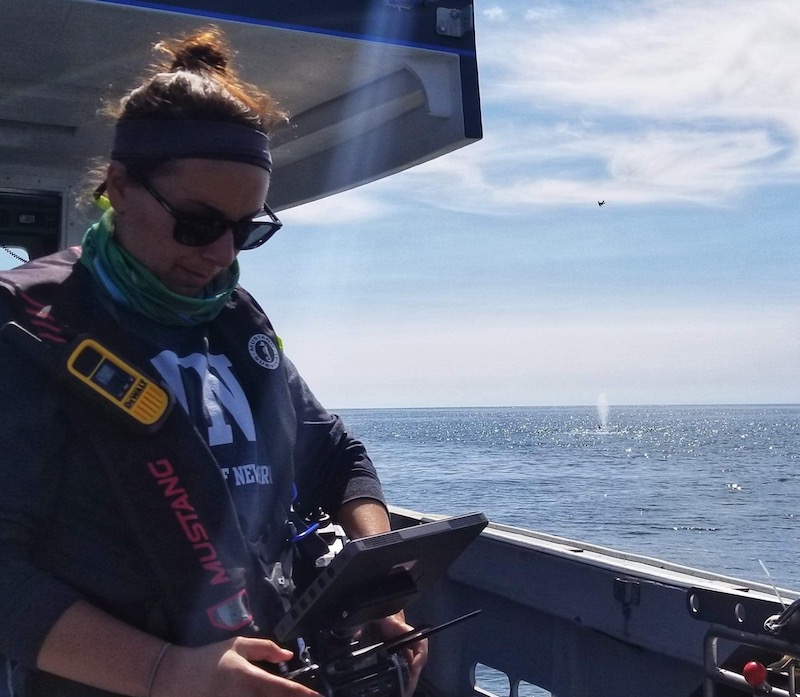
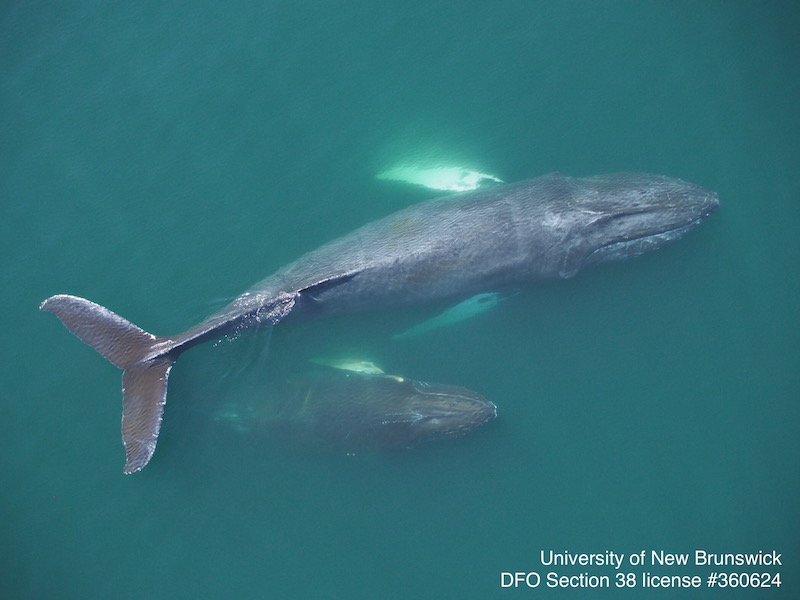
Part of the scarcity of right whales in the Bay of Fundy is due to climate change. Over the past decade, rising sea water temperatures and shifting ocean currents have diminished the once bountiful foraging grounds off the shores of Maine and New Brunswick. Right whales eat copepods, small planktonic crustaceans the size of rice grains.
As a result, right whales have drifted farther north, to places like the Gulf of St. Lawrence. In response to the whales' changing movements, Canada has been investing money, time, and attention to predicting where they might be at any given time. If they can better track the whales, the government can manage shipping traffic and fishing vessels to avoid collisions and entanglement.
Right whales are particularly vulnerable to being killed or injured by humans at sea, because they swim slowly and come in close to the coast. They also spend a lot of time at the surface of the water, Lonati explained.
To protect the world's remaining right whales, scientists and officials in Canada and the US are focused on better understanding the whale's habits, and how climate change is affecting their foraging, migrating, and breeding behavior.
"It is really all hands on deck right now. The Canadian government and all these nonprofits and universities are working together," Lonati said. "We morbidly joke that there are more right whale researchers than there are right whales. But the emphasis is on how we really need to come together and share data and collaborate in order to have the most positive impact on the species."
Lonati's research, which is folded into her thesis advisor's research, is partly funded by the Canadian Habitat Stewardship Program, University of New Brunswick, Canada Nature Fund for Aquatic Species at Risk, NSERC-DFO Whale Science for Tomorrow, and the Marine Environmental Observation and Protection Response Network.
Days 12&13 of the #davieslabwhaletrip: we concluded leg1 of our #bayoffundy #research with 9 more #drone flights over #humpback #whales. I’m thrilled with the data our team collected in 2 short weeks! Leg2 will feature more #oceanography studies! #bofwhaleresearch2020 #rpas pic.twitter.com/BPQXQBZZkJ
— Gina Lonati (@eubalaenagina) September 14, 2020
Lonati, who grew up in New Jersey, said she's known since she was a kid she wanted to study dolphins and whales. She chose to attend Bowdoin because of its coastal studies program. "When I was at Bowdoin, I fell in love with the rocky intertidal and New England coast," she said.
She earned her master's degree at the University of North Carolina–Wilmington, and later worked as a stranding biologist in Florida with the state's Fish and Wildlife Conservation Commission. Last year, she received a three-year Vanier Scholarship to support her PhD research with UNB professor Kim Davies.
"What inspires me about the lab I’ve joined here at UNB is that so many people are using their research and applying it to the conservation of right whales," she said. "Though I have yet to see a right whale—even though I have spent a year or more thinking about them—it's rewarding to think that the work we're doing behind the scenes and in the lab is still benefiting them."